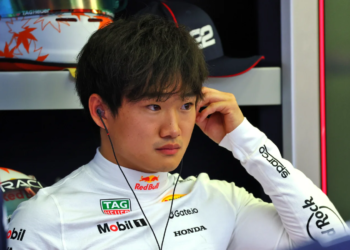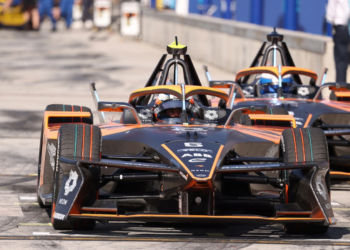That was the Formula 1 decade that was. And how will history view the 2010s? Of course, it’s never easy to judge in a historical context something you’ve just lived through. Still it doesn’t stop us trying.
Most broadly, it was a decade in which F1 wrestled with trying to get it right. But never quite managed it.
The first race of the decade, Bahrain in 2010, is a convenient starting point. As all gathered with a conspicuous sense of new dawn.
There was plenty to relish in the drivers’ market shake-up for 2010, and the team line-up looked suddenly very different as well.
F1 had approached the end of the previous decade looking a lot like manufacturers’ formula. But, in that way that manufacturers do, three of them – BMW, Toyota and Honda – had walked in the previous 12 months while another, Renault, rolled back its involvement.
On the other hand Mercedes was in for 2010, buying a controlling stake in the amazing Brawn squad, and Merc would of course in time play a leading role in the decade that followed.
And there were three new teams – Lotus, Virgin and HRT – lining up in the stead of the departed manufacturers, though this part of the brave new world was sadly temporary.
They were in as part of FIA president Max Mosley’s low-cost vision, with a promised £40m budget limit. But that didn’t hold, neither did the subsequent ‘gentlemen’s agreement’ Resource Restriction Agreement (as Ross Brawn noted dryly, there’s not many gentlemen in the paddock). This in advance holed the newbies below the waterline.
That the US F1 team didn’t make the 2010 grid was a portent; neither did Stefan Grand Prix which was rumoured to come in. HRT barely made it, literally still building its cars as the opening race weekend got underway and Karun Chandhok only just made it out for qualifying.
And the three new teams virtually never caught up with the tail-end of the rest and all disappeared in time. Virgin/Marussia/Manor lasted the longest, until the end of 2016.
Aside from the newbies though there was surprising stability among the teams’ throughout the 2010s decade. As the other nine squads on Bahrain 2010’s grid have all lived on, albeit with some changes in names and ownership: Renault – to Lotus and back to Renault – as well as at Sauber to Alfa Romeo and Force India to Racing Point. Only Haas has joined them in 2016.
The racing in 2010 promised to be different too, as refuelling – ubiquitous but also expensive, dangerous and militating against on-track action – was ditched. This move caused initial consternation after a tepid first race of the new dawn. But it hasn’t been back since, nor is there a great desire for it.
This F1 decade was unique in its predictably. As in the entire 10 years only two teams, and three drivers, won a championship – all-time lows
The campaign started with a new dawn politically also. Mosley’s long FIA tenure ended the previous autumn. The existing teams, unhappy with Mosley’s plans for reform, in 2009 united under the Formula One Teams’ Association (FOTA) and had threatened a breakaway.
Uneasy compromise broke out instead, as it always seems to. But Mosley not submitting himself for re-election seemed part of the deal. He was replaced by Jean Todt.
The decade therefore started with incongruous political calm. But it didn’t last long. Ferrari and Red Bull cut and run from FOTA, and signed lucrative financial deals with F1. Mercedes managed to wangle something similar.
And it gave rise to another matter that characterised the decade: a notorious financial skew and conspicuous ‘class A’ and ‘class B’ on track, with Mercedes, Ferrari and Red Bull in another race from the rest. No-one from outside the big three has won a race since 2013’s season-opener. Even podium finishes became sheer rarities.
It was accompanied by an over-complex F1 governance structure which created a debilitating logjam thwarting attempts to fix problems.
This F1 decade was unique in its predictably. As in the entire 10 years only two teams, and three drivers, won a championship – all-time lows. Only four times out of the 10 seasons was the title still open in the last race. To cut a long story short, Red Bull dominated up to the end of 2013; Mercedes dominated since.
The baton passed from Red Bull to Mercedes with likely F1’s biggest ever technical jump between seasons. For ‘14 the 2.4-litre V8 engine was out, replaced by a 1.6-litre turbocharged unit with greatly increased energy recovery gubbins and a fuel limit, ‘green’ technology behest of the manufacturers and ‘road relevance’. Even the name changed: ‘power unit’ replaced ‘engine’ in the parlance.
Mercedes, whose preparation for the new regs had been long and exacting, aced it. And the units were in many senses a work of wonder, increasing thermal efficiency from under a third to over half, a level which had been resistant to change in the entire motor industry over decades.
But they also were costly and complex, which had manifestations – in competitiveness, reliability and vastly-increased bills.
Caterham and Marussia went into administration towards the end of that ’14 season, and while Marussia soldiered on for a while under other guises it was only a stay of execution. The increased political muscle-flexing of the manufacturers was an accompanying problem.
We entered the decade faced with the long-held problem how the cars can be made to pass each other. And at the broadest level F1 did solve it. But with the quantity was not necessarily quality
The decade contained another grand regulation shift, for 2017, and the focus of that was the chassis. But that shift was even more unequivocally wrong-headed.
The cars certainly looked the business, and were quicker. But the latter was a lot of the problem. The changes, self-admittedly among those who conceived them, were not about helping cars race each other.
“My belief is that the more downforce you have on a car, the harder it is to follow. And this car has more downforce,” said Pat Symonds stating the obvious well in advance. “For me it's the worst idea,” added Lewis Hamilton on the same subject; “it just shows for me that they don’t really know what they're trying to solve.” And sure enough the number of overtakes was cut in half.
F1’s relationship with the overtake in the 2010s was a vexed one. We entered the decade faced with the long-held problem how the cars can be made to pass each other. And at the broadest level F1 did solve it.
In 2010, sans refuelling, the number of overtakes doubled compared with 2009. And then in 2011 desperate times meant desperate measures. DRS and built-not-to-last Pirelli tyres were introduced, and the number of passes nearly doubled again from 452 to 821.
But with the quantity was not necessarily quality, as many overtakes became akin to accelerating past lorries on the motorway. The delicate tyres also turned racing into a constrained cruise. DRS and gumball Pirellis have lived on, but again uneasily.
Yet somehow in among it all F1 in the 2010s provided plenty of classic racing moments. Jenson Button’s epic wet-to-dry win in Montreal in 2011 will go into legend, so likely will 2012’s title showdown at Interlagos. Bahrain in 2014 was brilliant and may have saved the hybrid formula, while Baku in 2017 was the ultimate in madcap.
While in 2012 seven different drivers won the first seven races, and the first five were won by different teams; both records. In recent years the quality of entertainment has been fairly consistently good.
The quality of drivers couldn’t be doubted either. We started the decade with Hamilton, Fernando Alonso, Sebastian Vettel, Robert Kubica, Button, Mark Webber and Nico Rosberg. Kubica, sadly, would be lost to most of the decade but the star cast was supplemented with Kimi Raikkonen, Daniel Ricciardo, Max Verstappen and, laterally, Charles Leclerc. F1 is at least getting one thing right.
Liberty was certainly minded of the right things that would make F1 better. Its ability to implement it though inspired less confidence
Then one thing in F1 changed, changed utterly. Something that was always inevitable, yet somehow for decades unthinkable. Bernie Ecclestone in early 2017 was moved on, or rather up – so far up that he couldn't see what was going on, as he liked to quip. One of sport’s most conspicuous one-man bands was replaced by Liberty Media and its cast of thousands.
For a while it was glad confident morning. Liberty was full of ideas particularly in areas that F1 had been left behind in such as marketing and the digital age. F1 indeed got more open and, on the promotional side, lively.
And whatever else, and in something you couldn’t always say with confidence about its predecessor, Liberty was certainly minded of the right things that would make F1 better: that F1 needed to change in its financial distribution and improve the ability of cars to race each other. Its ability to implement it though inspired less confidence.
For a long time few of Liberty’s plans were revealed beyond vague aspiration, and Liberty’s ability to stand resolute against opposition to getting its changes through was doubted. It ceded on plans to simplify engines in the face of manufacturer opposition.
More broadly, F1 revenues for the teams drifted downwards on its watch and the jury remained out on its success in its stated aim of attracting a wider audience. Its new TV deals, some of which had coverage disappearing behind paywalls, didn’t do much to bring clarity to the situation.
It goes further still. That F1TV and even the new TV graphics package – ‘first name; last name…’ – had a stuttering start fed into the same idea. As did emails referring to ‘Nickie Lauder’. That Liberty seems rather accident prone. And remember what Napoleon said about lucky generals.
Yet for Liberty, and F1, much hangs on 2021. That’s when a grand overhaul in regulations and finance is promised, and late this year Liberty at last put some meat on the bones. Ground effect chassis are in to lessen the impact of ‘dirty air’, so is a cost cap which Brawn promised that the enforcement of will have “teeth”.
And thus we end the decade rather as we started it, looking ahead to what will hopefully be a brighter future. But, then again, we’ve thought that before.






